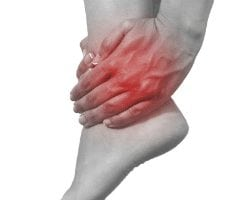
Why do you need an ankle brace?
Share
Whether it's after a sports injury or one of the many accidents that can occur in everyday life, an ankle brace can be a great aid in recovery. Styles vary according to need, but the device should be rigid or flexible, with a choice of plastic or metal supports for more control or to prevent potential problems. Stronger types tend to be secured with laces or Velcro, while lighter pullovers are used to reduce inflammation. Whatever the problem, it's always wise to seek medical advice to determine the most appropriate treatment - proper care after a fall is paramount.

Ankle Sprain
Ankle braces Ankle sprains are a common complaint, and if you've ever suffered from it, you know how painful it can be at worst. That's not surprising, since it's basically a torn or stretched ligament, which is what connects the bones at the joints and holds them in place. The initial swelling can be managed by using an ice pack. The affected part can then be protected by installing a reinforcing brace or splint for up to six weeks until all swollen areas and discomfort are gone.
If you're prone to sprains, or if you're actively participating in potentially dangerous sports, you might consider protecting yourself just in case. Ankle braces offer an affordable alternative to tape with the added advantage that it can be applied and removed by the wearer, reused, and easily adjusted for comfort. Hold tight enough to provide support, but be careful not to impede blood circulation.
How to pick the correct ankle brace
Precaution
Uninjured athletes may prefer to use ankle braces or wraps during one-time activities, or use ankle braces regularly to support weak points or protect fragile ligaments and bones in the event of a fall. In disciplines such as football and basketball, players often reserve them for practice, which can be equally risky. Runners take the same approach, though they take care not to rely on them too much, lest their muscles adapt incorrectly, resulting in weaker ankles. High-tops will help in a similar fashion.
British tennis player Andy Murray, an ardent advocate for preventive measures, has suffered from ankle problems throughout his career. He likes lightweight, breathable styles that allow him to change directions quickly and confidently.
strengthening exercises
Strengthening exercises are wise to exercise to strengthen any weakness, rather than relying entirely on artificial reinforcements, which may limit mobility slightly in some cases and may delay the return of the limb to full use. The main purpose of an ankle brace is to immobilize injured ligaments and allow them to heal unimpeded. Once you feel like you've passed this stage, consult a health or exercise professional, and if they agree with you, you can drop the bracing but keep exercising to strengthen the area. Stand on your legs for short periods of time, gradually increasing the amount of time your feet can handle.
Guards are needed not only in everyday situations and exercise. Protective clothing may also provide some safety during more extreme sports, and trauma surgeons recommend that skydivers should wear ankle braces and spinal braces to cushion the effects of a quick and uncontrollable landing!










